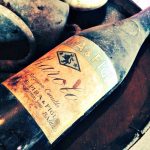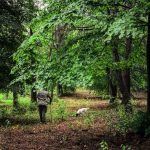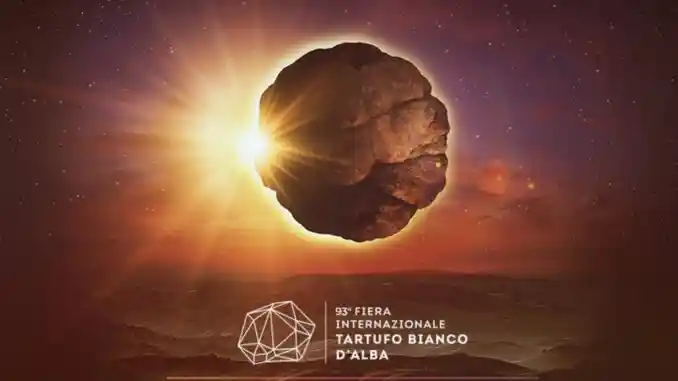Welcome to the enchanting world of Barolo wines. Often described as the ‘King of Wines and the Wine of Kings’, Barolo hails from the heart of Italy’s renowned Piemonte region. With its rich history, remarkable producers, and distinct characteristics, Barolo has become a cherished gem among wine lovers worldwide. Whether you’re a seasoned connoisseur or an adventurous novice, our ultimate guide to Barolo wines is your perfect companion on this intoxicating journey.
Dive into the captivating universe of Barolo wines with our comprehensive guide. Unravel the history of these renowned wines, discover top producers, and explore the best vintages for collectors. Whether pairing Barolo with exquisite dishes or considering an investment in this liquid gold, our guide offers valuable insights and tips. Let the King of Wines reign supreme in your wine exploration journey!
📍 History of Barolo Wines
The Marchesa Giulia Colbert Falletti di Barolo is often credited with creating the first modern Barolo wine. In the early 19th century, she hired a French oenologist to produce a wine that could compete with the finest French Bordeaux. The result was a wine that was aged for years in large oak barrels, which is one of the defining characteristics of Barolo wine today.
In the 20th century, Barolo wine continued to evolve with the introduction of new winemaking techniques. In the 1970s and 1980s, a group of young winemakers, known as the “Barolo Boys”, began to experiment with shorter fermentation periods and aging the wine in small French oak barrels. This resulted in a more fruit-forward, earlier-maturing style of Barolo, which was a departure from the traditional style.
Today, both traditional and modern styles of Barolo are produced, and the wine is revered for its deep color, rich tannins, and complex flavors of cherry, rose, anise, and leather.
📍 Top 10 Barolo Wine Producers to Visit
📍 Customized Truffle Hunting Tours: For those who are interested in a unique and immersive experience, we offer the opportunity to customize your own truffle hunting tour. Whether you prefer a private tour or wish to join a group, we can arrange a truffle hunting experience in some of the best truffle regions in Italy. Our customized tours can include a variety of activities, such as truffle hunting with a local guide and trained dogs, visits to local truffle markets, and meals at renowned restaurants where you can savor the exquisite taste of fresh truffles. To request a customized truffle hunting tour, please write to us at [email protected]. Our team will be more than happy to assist you in planning an unforgettable truffle hunting experience in Italy.
Here there are the best Wine Producers in Barolo to Visit during the Alba White truffle fair.
- Giacomo Conterno: Known for producing some of the most robust and long-lived Barolo wines.
- Bruno Giacosa: This winery is famous for its dedication to traditional winemaking methods.
- Gaja: A renowned winery that has been in operation since the mid-19th century.
- Bartolo Mascarello: A small family-run winery that consistently produces top-quality Barolo.
- Aldo Conterno: Known for its elegant, complex Barolo wines.
- Roberto Voerzio: This winery is famous for its meticulous vineyard management and low yields.
- Elio Altare: A pioneer of the modernist movement in Barolo, producing more approachable, early-drinking styles.
- Giuseppe Rinaldi: Known for its traditional and natural approach to winemaking.
- Vietti: This winery has a wide range of vineyard holdings and produces a variety of single-vineyard Barolos.
- Poderi Luigi Einaudi: Founded by the first President of Italy, this winery has a long history and produces consistently high-quality Barolo.
📍 Top 3 Barolo Wine Tours
- Barolo Wine Tour with Piedmont Food and Wine: This tour offers a comprehensive experience of the Barolo region, including visits to several top wineries and a traditional Piedmontese lunch.
- Langhe Wine Tour with Truttlehunting.Tours: This tour provides a deep dive into the history and production of Barolo, with tastings at select wineries.
- Private Barolo Wine Tour with Albacitytours.com: This private tour offers a personalized experience, with visits to small, family-run wineries and tastings of Barolo and other Piedmont wines.
📍 Top 3 Activities in the Barolo Region
- Hot Air Balloon Ride: Experience the breathtaking beauty of the Barolo region from above with a hot air balloon ride. This unforgettable experience offers a unique perspective of the vineyards, rolling hills, and medieval towns of Piedmont.
- Dining at a Michelin-Starred Restaurant: The Barolo region is home to several Michelin-starred restaurants where you can enjoy exquisite Piedmontese cuisine. One of the most renowned is Piazza Duomo in Alba, which boasts three Michelin stars and offers a menu that creatively interprets local ingredients and traditions.
- Truffle Hunting Experience: Truffles are one of the most prized culinary treasures in Piedmont. Join a local truffle hunter and his trained dog for a truffle hunting experience in the woods. You’ll learn about the ecology of truffles, the art of truffle hunting, and have the opportunity to taste this rare delicacy.
📍 Best Pairing Barolo Wines
Barolo, often referred to as “the king of wines and the wine of kings”, is a rich, full-bodied red wine that is known for its complex flavors and high tannin content. This makes it an excellent pairing for a variety of dishes, particularly those that are rich in flavor.
1️⃣ Meat Dishes: Due to its robust nature, Barolo pairs exceptionally well with red meat dishes such as steak, roast beef, and lamb. The high tannin content in the wine helps to balance the richness of the meat.
2️⃣ Truffles: Barolo is produced in the Piedmont region of Italy, which is also famous for its truffles. The earthy flavors of truffles complement the complex flavors of Barolo, making them a perfect match.
3️⃣ Aged Cheeses: The strong flavors of aged cheeses like Parmigiano-Reggiano or Pecorino can stand up to the boldness of Barolo. The saltiness of the cheese can also help to balance the tannins in the wine.
4️⃣ Risotto: A rich, creamy risotto is another excellent pairing for Barolo. The creaminess of the risotto can help to soften the tannins in the wine, while the wine’s acidity can cut through the richness of the dish.
Remember, the best wine pairing is one that you enjoy. So feel free to experiment with different dishes to find your perfect Barolo pairing.
📍 Characteristics of Barolo Wines
Barolo is a full-bodied red wine made from the Nebbiolo grape. It is known for its rich, complex flavors and high tannin content, which allows it to age for many years. The wine is often described as having flavors of tar and roses, along with notes of cherries, raspberries, truffles, and leather.
Barolo wines are required to age for a minimum of 38 months after the harvest, with at least 18 months in oak. Riserva wines must age for at least 62 months. This extended aging period contributes to the wine’s complex flavors and its potential for long-term cellaring.
The Nebbiolo grape used to make Barolo wine is grown in the Langhe hills of the Piedmont region in northern Italy. The vineyards are situated on steep hillsides at altitudes of 200 to 400 meters, which provides the grapes with ample sunlight and well-drained soils.
In the next section, we’ll explore some of the top producers of Barolo wine and the best wine tours in the region.
Barolo wines are known for their rich, full-bodied flavor profile. They typically have high tannin levels, which contribute to their ability to age and develop complex flavors over time. Common flavor notes in Barolo wines include cherry, raspberry, and rose, along with hints of truffle, leather, and tar.
📍 Best Vintages of Barolo for Collectors
Certain vintages of Barolo are particularly sought after by collectors due to their exceptional quality and aging potential. These include the 1970, 1971, 1978, 1982, 1989, 1996, 1999, 2001, 2004, 2006, 2010, 2015, and 2016 vintages.
The quality of a vintage can be influenced by a variety of factors, including the weather conditions during the growing season, the yield of the harvest, and the winemaking techniques used. In general, the best vintages are those that had a balance of warm and cool weather, allowing the grapes to ripen fully while still retaining their acidity.
The 1970 and 1971 vintages are considered some of the best of the 20th century, with wines that are still drinking well today. The 1978 vintage is also highly regarded, with wines that are rich and powerful, with high tannin levels that have allowed them to age gracefully.
More recent vintages like 2001, 2004, and 2006 are noted for their balance and elegance, while the 2010, 2015, and 2016 vintages are praised for their concentration and complexity, with high aging potential.
The cost of these vintages can vary significantly, with older vintages generally being more expensive due to their rarity. However, the price can also be influenced by the reputation of the producer and the quality of the individual wine.
In recent years, some collectors have been less interested in recent vintages due to the trend towards more fruit-forward, earlier-drinking styles of Barolo. These wines, while still high in quality, may not have the same aging potential as the more traditional styles of Barolo. However, this is a matter of personal preference, and many collectors still seek out recent vintages for their vibrant fruit flavors and immediate drinkability.
📍 Investing in Barolo Wines
Investing in Barolo wines can indeed be a lucrative venture, but it’s not without its risks. Like any investment, it’s important to do your research and understand the market before diving in. One of the key factors that make Barolo wines a good investment is their longevity. Made from the Nebbiolo grape, Barolo wines are known for their ability to age gracefully for decades. This longevity can increase the value of the wine over time, especially for well-regarded vintages. The prestige of the Barolo name also adds to the wine’s investment potential. Known as the “King of Wines and the Wine of Kings”, Barolo has a long history and is considered one of Italy’s finest wines. This reputation can make Barolo wines particularly appealing to collectors and wine enthusiasts, helping to drive up demand and prices.
However, investing in wine is not a guaranteed way to make money. The wine market can be unpredictable, and prices can fluctuate based on a variety of factors. These can include the overall economy, trends in the wine industry, and even the weather in the Barolo region. Furthermore, storing and caring for wine can be complex and costly. To maintain their quality and value, wines need to be stored in specific conditions, which typically involves a temperature-controlled wine cellar or storage facility.
Finally, it’s worth noting that the enjoyment of wine is subjective. A wine that one person considers a masterpiece might not appeal to someone else. Therefore, it’s always a good idea to invest in wines that you enjoy drinking. That way, even if the investment doesn’t pan out, you can still enjoy the wine. In conclusion, while Barolo wines can be a good investment, it’s important to approach this venture with knowledge, caution, and a genuine love for the wine.
📍 Barolo Wine Production
The production of Barolo wine is a meticulous and time-consuming process that requires a deep understanding of the local terroir and a commitment to quality. The process begins with the cultivation of Nebbiolo grapes, a red grape variety known for its thick skin and high tannin content.
The Nebbiolo grapes for Barolo wine are typically harvested in mid to late October, later than most other grape varieties. This late harvest allows the grapes to develop a high level of acidity and tannin, which are essential for the aging potential of Barolo wines.
After the grapes are harvested, they undergo fermentation, a process that typically lasts between one to two weeks. During fermentation, the sugar in the grapes is converted into alcohol, and the skins of the grapes release their color and flavor into the wine.
Following fermentation, the wine is aged in oak barrels for at least two years. The oak aging process allows the wine to develop additional flavors and softens the high tannin levels. After aging in oak, the wine is bottled and then aged for another year in the bottle before it can be sold.
The result of this careful and lengthy production process is a wine that is rich, full-bodied, and capable of aging for many years. Barolo is often described as having flavors of tar and roses, and its high tannin content gives it a firm structure and the ability to age and develop for decades.
It’s important to note that Barolo wines are often not approachable in their youth due to their high tannin levels and acidity. They typically require several years of aging to soften and develop their complex flavors. This aging potential is one of the reasons why Barolo is often referred to as “the king of wines and the wine of kings”.
📍 Pairing Barolo Wines
Barolo wines are versatile and can be paired with a variety of foods. Their high tannin levels and acidity make them a good match for rich, hearty dishes like braised meats and risotto. They also pair well with truffles, a delicacy found in the same region of Italy.
📍 Famous Barolo Wine Producers
There are many renowned producers of Barolo wine, each with their unique style and approach to winemaking. Some of the most famous include Giacomo Conterno, Bruno Giacosa, and Gaja.
📍 Conclusion: The King of Wines
Barolo, often referred to as the “king of wines,” is a testament to the rich winemaking tradition of the Piedmont region. Whether you’re a seasoned wine collector or a casual wine lover, the complex flavors and aging potential of Barolo make it a wine worth exploring.















